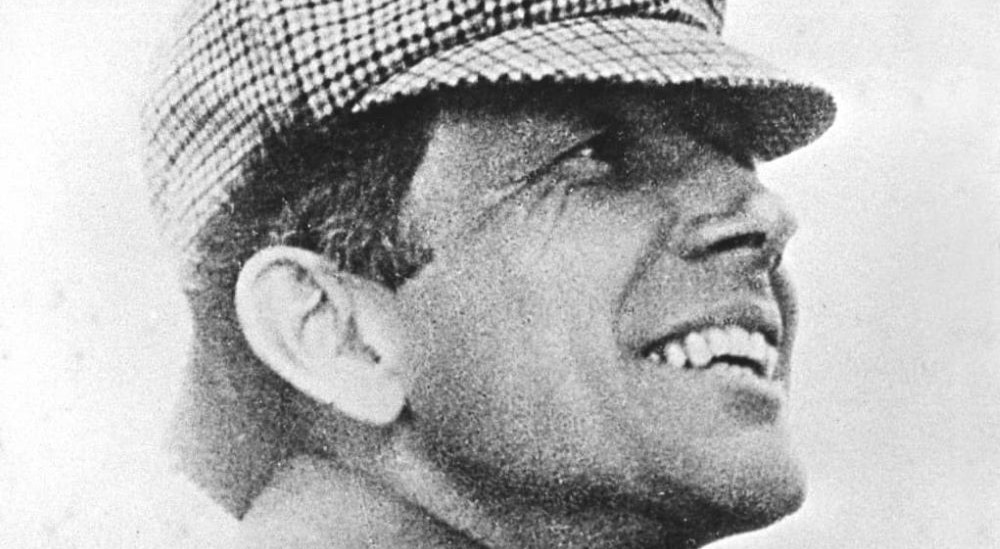The automotive history is full of surprises, with many people skipping the finer details to highlight the successes and big-picture ideas that transformed the American automotive landscape. We see this in William Durant’s climb to success when he formed General Motors and later teamed up with Louis Chevrolet. But what about the details in between? What about the elements that define the trajectory that’s led to Chevy dealers across the country opening their lots to modern road warriors like the Silverado, icons like the Camaro and Corvette, and versatile SUVs like the Tahoe and Suburban?
What details do we often miss in a culture obsessed with highlight reels? We miss individuals like George Selden and Alexander Brownell Cullen Hardy. We miss details of Durant’s ousting from General Motors, the very act that led him to Louis Chevrolet. Here’s a closer look at these individuals and events that, despite being overlooked, are remarkably significant to the automotive industry and where it is today.
George Selden and the Patent That Stifled the Automotive Industry
George Selden is to the automotive industry what Voldemort is to the Harry Potter series. His is a name best unmentioned because he played a pivotal role in stifling the automotive industry at a critical time in history. How so?
A lawyer and inventor, Selden filed a patent in 1879 for what he called a “road locomotive.” Unofficially an automobile of sorts, the locomotive was equipped with an internal combustion engine based on the 1872 compression engine designed by George Brayton. While innovative, the demand for automobiles hadn’t caught on yet, leading Selden to employ his lawyer tactics to delay his patent for nearly two decades by filing numerous amendments.
Selden’s patent was so vague and convoluted that, by the rise of the automotive industry in the 1900s, he argued that the patent covered every type of horseless carriage with an engine. His logic initially worked, with the lawyer collecting royalties and gaining a monopoly over the industry. Most automotive pioneers couldn’t afford to fight the patent, knowing Selden’s pockets grew deeper by the day. However, that changed when a young inventor named Henry Ford set out to fight Selden and spent the next eight years in a heated courtroom battle.
“We possess just enough of that instinct of American freedom to cause us to rebel against oppression or unfair competition,” Ford said of the legal battle that drew comparisons to a Goliath-style struggle Ford eventually won. “It is perfectly safe to say that George Selden has never advanced the automobile industry in a single particular… and it would perhaps be further advanced than it is now if he had never been born.”
After eight years and a mountain of legal documents, Ford’s victory was sweet and put the automotive industry on a new trajectory. Finally, inventors could return to tinkering and developing, two practices integral to progressing the industry. It’s what Ford intended when he fought the industry’s biggest bully and gave his fellow pioneers the opportunity to freely pursue their ideas and dreams of putting the world on wheels.
A.B.C. Hardy: A Man Happy to Stand in the Shadows of Greatness
William Durant, Louis Chevrolet, and Henry Ford often steal the spotlight and garner widespread acclaim for their ingenuity in shaping the American automotive industry. However, several others stand in the shadows and don’t get the recognition they deserve. Among these prominent figures is Alexander Brownell Cullen Hardy, known as “A.B.C.” to his friends.
Born in Ypsilanti, Michigan, in 1869, Hardy was thrust into adulthood after the death of his parents. With no one to look out for him, Hardy found work at the Davidson Road Cart Company, where he developed a keen business sense and fostered the business’ transformation into the Wolverine Carriage Company. By the late 1890s, Hardy crossed paths with a young entrepreneur named William C. Durant. The two became fast friends, with Durant hiring Hardy to oversee the Diamond Buggy Company of Durant-Dort. With Hardy at the helm, the company’s profits soared and sealed his fate as Durant’s right-hand man.
Over the next few years, Durant’s reliance on Hardy became overwhelming, so much so that Hardy couldn’t get excited about falling in love and marrying Eusebia Florence Bates. Hardy was so put off with work that he quit and set off for Europe with his wife in 1900. Coincidentally, the honeymoon was exactly what Hardy needed as he discovered a new invention known as the automobile.
Back on American soil, Hardy worked tirelessly to convince Durant that automobiles were the next big thing, but Durant hated the idea. He believed automobiles were too noisy and dangerous, forcing Hardy to take matters into his own hands and invest his savings to open the Flint Automobile Company. Hardy debuted the Flint Roadster, Flint’s first mass-produced vehicle, and was well underway producing the first 50 models when the businessman and innovator faced a new challenge: the Selden patent. Ford hadn’t yet taken Selden to court, meaning the unethical lawyer was demanding Hardy pay $50 for each model he sold. Unable to meet the demands, Hardy dissolved the company and looked for work elsewhere.
William C. Durant: A Grand Idea and a Huge Risk
Although Durant refused to believe that automobiles were the future, as Hardy mentioned, Durant realized his mistake. He was named manager of Buick in 1904 and spent the next several years fostering the company’s growth. By 1908, Hardy’s Flint Automobile Company had failed, and Ford was entangled in a battle against Selden. Durant contacted his longtime friend, Hardy, for help as he built an automotive powerhouse known as General Motors.
Hardy was happy to help, managing over 30 companies and 11 automakers that Durant had purchased in less than two years. However, Durant’s spending spree proved far too expensive for the company’s board. His business acumen was impeccable, but the board ousted Durant in 1911, hoping to recover financially. Although Durant was no longer in GM’s good graces, he refused to stop and teamed up with Louis Chevrolet to form the Chevrolet Motor Car Company. Chevrolet’s early success gave Durant enough capital to buy stock in General Motors, ultimately leading him to regain control of the company in 1916.
Durant’s tenure at the helm of General Motors was short-lived, with Durant fired in 1921. Although Durant was out for good and spent the rest of his career managing a bowling alley, Hardy remained a prominent figure at General Motors. He was named president and general manager of Oldsmobile, known then as Olds Motor Works, and eventually retired from the company in 1925.
The Power of Looking Beyond
It’s easy to focus on industry pioneers like Henry Ford, Louis Chevrolet, and William Durant, especially their successes because these innovators and businessmen are responsible for shaping the automotive landscape. However, we do the industry a huge disservice by ignoring the details or failing to look beyond the spotlight at individuals like George Selden and A.B.C. Hardy or even Durant’s ousting from the General Motors throne not once but twice.
These men and their stories, the details rarely shared, shed new light on the men who helped put the world on wheels. It shows us their raw humanity. For example, we see how Selden’s gluttony for wealth created a monopoly that stifled ingenuity in the industry for years until Ford finally said enough is enough. Likewise, we hear the story of men like A.B.C. Hardy, who refused to back down from forces of nature like William Durant, a man whose own need for control and the ongoing pursuit of more cost him his entire career. These details show us the fierce nature of the automotive industry and the groundwork on which it was built.




